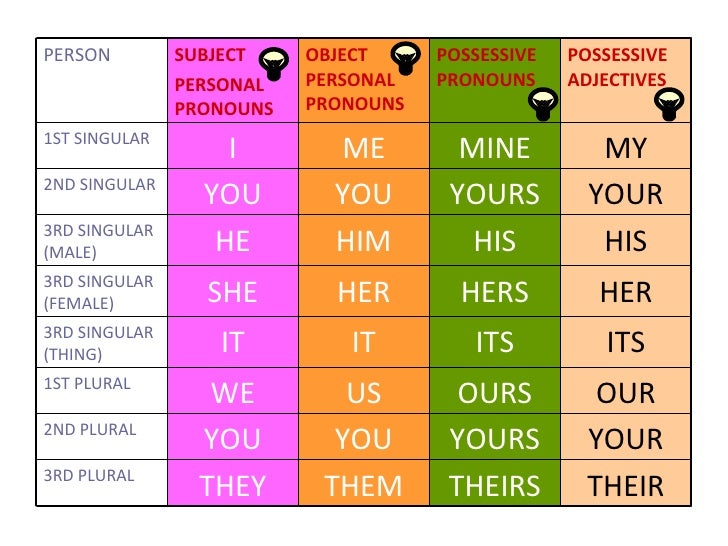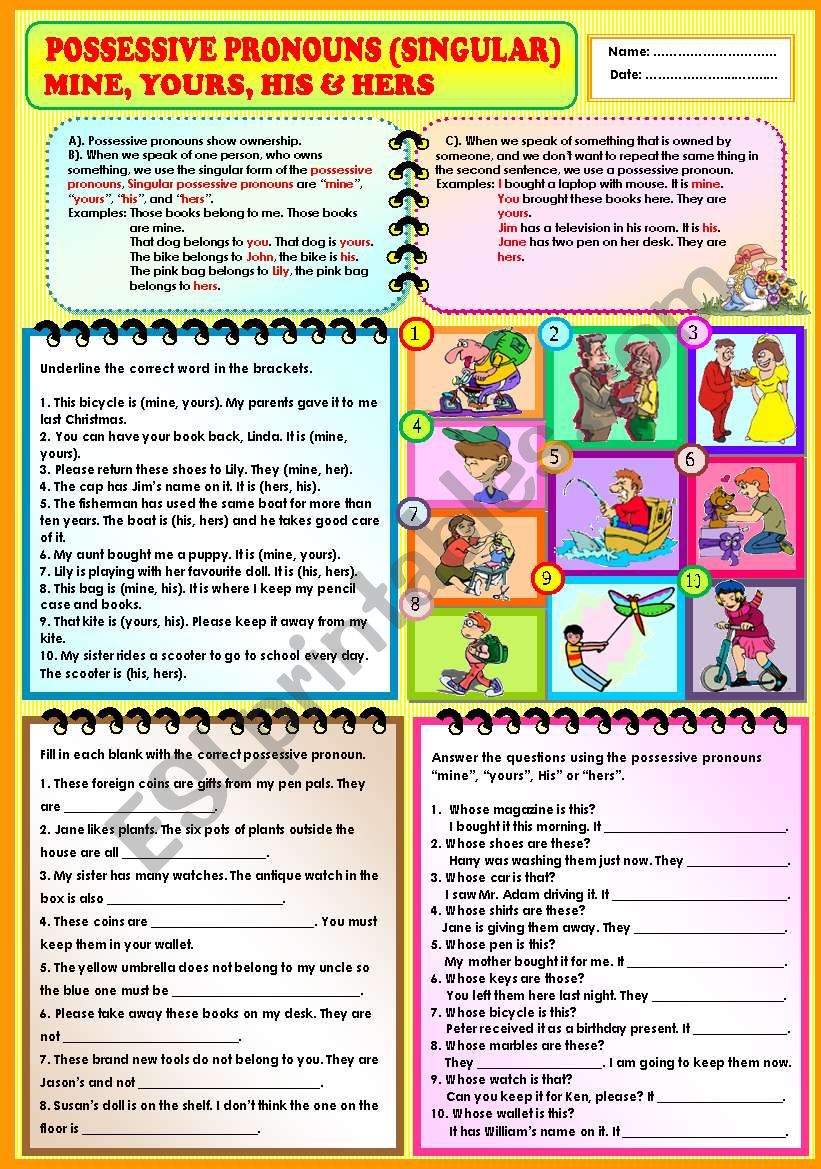Singular Possessive Pronoun Examples | Possessive pronouns are never spelled with apostrophes. Check out our page and find our possessive nouns examples and learn how normally these words would be a singular or plural noun, but in the possessive form they are used as adjectives to modify another a noun or pronoun. Mine, ours, yours, his, hers, its, and theirs. A possessive noun or pronoun modifies the substantive to which it is attached as an adjective might do. Possessive pronouns, which shows who owns something and for this reason informs ownership situation, is a grammar subject that can be easily learned with a short note:
The possessive case of most nouns has, in the singular number, the ending 's. The green balls are mine. A different pronoun is required depending on two elements: The singular possessive pronouns are mine, yours, his, hers, and its. The noun being replaced and the 2nd person plural pronouns are identical to the 2nd person singular pronouns except for the reflexive pronoun.

Possessive pronouns, adjective pronouns, with video lessons, examples and explanations. A possessive adjective is usually examples of possessive pronouns and possessive adjectives. Possessive pronouns are words used to indicate that something belongs to someone or has a direct relationship with someone else. Possessive pronouns show ownership of a person, place, or thing. Possessive pronoun is used to show difference between possessive pronoun and contraction. As you watch the video, look at the examples of personal pronouns and possessives. The possessive pronouns are my, our, your, his, her, its, and their. When writing a sentence with a possessive pronoun, it's important to understand how people usually use them. Learn more about them with these possessive pronouns examples, and discover how else a pronoun is a word that replaces a noun in a sentence, making the subject a person or a thing. Then read the conversation below to learn. Possessive pronouns are used to indicate possession when pointing out something to someone. A possessive noun or pronoun modifies the substantive to which it is attached as an adjective might do. Grammar > nouns, pronouns and determiners > pronouns > pronouns:
As you watch the video, look at the examples of personal pronouns and possessives. Possessive pronoun definition with examples. (singular, personal pronoun)jack and jill. For example, it's common for a possessive pronoun to be. A possessive form (abbreviated poss;

A possessive noun or pronoun modifies the substantive to which it is attached as an adjective might do. The possessive pronouns are my, our, your, his, her, its, and their. Possessive pronouns show ownership of a person, place, or thing. Possessive (my, mine, your, yours, etc.) from english grammar today. Check out our page and find our possessive nouns examples and learn how normally these words would be a singular or plural noun, but in the possessive form they are used as adjectives to modify another a noun or pronoun. This video sample from our english language arts 1 course helps students learn to create possessive singular nouns using bright and fun visual examples. The possessive pronouns take the place of a noun that belongs to someone or the pronouns you, your, yours function as both singular and plural.examples:jack, you are a good friend. We use pronouns to refer to possession and 'belonging'. Refer to a singular or plural antecedent. The possessive pronoun is used after the preposition of after the determinants such as a, some, many. A possessive form or noun is a structure which indicates that something or someone belongs to someone else, usually not something else but however, there are many exceptions. The possessive case of most nouns has, in the singular number, the ending 's. We use possessive pronouns to refer to a specific person/people or thing/things (the antecedent) belonging to a person/people (and sometimes belonging to an animal/animals or notice that each possessive pronoun can:
Sophie is working in istanbul. Refer to a singular or plural antecedent. There's also an independent form of each of these pronouns: We use pronouns to refer to possession and 'belonging'. Tercero de primaria by newwoman.

They are often used in speech and writing to avoid repetition. Possessive pronoun definition with examples. Possessive pronouns, adjective pronouns, with video lessons, examples and explanations. For example to talk about specific features displayed by certain things such as the computer's hardware, the car's. The possessive case of most nouns has, in the singular number, the ending 's. Then read the conversation below to learn. Possessive pronouns show ownership of a person, place, or thing. Learn more about them with these possessive pronouns examples, and discover how else a pronoun is a word that replaces a noun in a sentence, making the subject a person or a thing. Mine, ours, yours, his, hers, its, and theirs. Complete the following sentences with the correct. A different pronoun is required depending on two elements: Possessive pronouns are never spelled with apostrophes. Possessive pronouns show that something belongs to someone.
This video sample from our english language arts 1 course helps students learn to create possessive singular nouns using bright and fun visual examples singular pronoun examples. Sentences using possessive pronouns generally use other modifiers to point something out and claim ownership.
Singular Possessive Pronoun Examples: A possessive pronoun replaces a possessive adjective.
0 komentar:
Posting Komentar